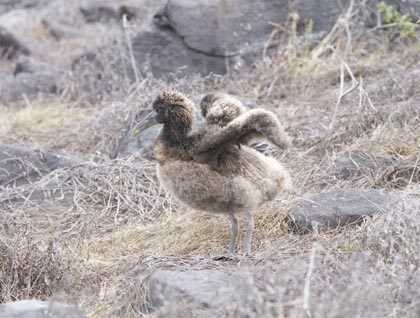Galápagos is a chain of oceanic islands formed by volcanic activity. Some of the islands were formed millions of years ago, and some others are just in the process of being formed today. That is the reason the Galápagos is probably one of the best examples of adaptive radiation, or speciation in action, as some of these animals were able to colonize at different times and under different conditions. Today we had the privilege to explore the oldest dormant volcano in this archipelago, known as Española Island.
The flora and the fauna of this island is very special , because some of these inhabitants are found only here and nowhere else in the Galápagos. As an example of that, we spotted Española marine iguanas, Española lava lizards, Española mocking birds, Española land snakes and waved albatross. Today we had the best example to understand how the flora and fauna were able to adapt and establish in the different conditions and situations found in this inhospitable place.
This island has been under restoration management for nearly 50 year already by the Galápagos National Park, and today we were witnesses of this amazing work carried on by the Ecuadorian government.
One of the most famous restoration programs in the Galápagos is found on this island. This chain of isolated volcanoes is famous for their majestic giant tortoises. These giant terrestrial reptiles were bought almost to extinction by pirates, explorers, and introduced animals. The total number of these giants, at this island, was just 14 left in the wild, and yet now we are very proud to inform that we have over 2,000 of them roaming free on their home island.
Today we also had some of the most memorable moments in the Galápagos: swimming and snorkeling with Galápagos playful sea lions, and walking next to albatross chicks, blue-footed boobies, and Nazca boobies as well.







